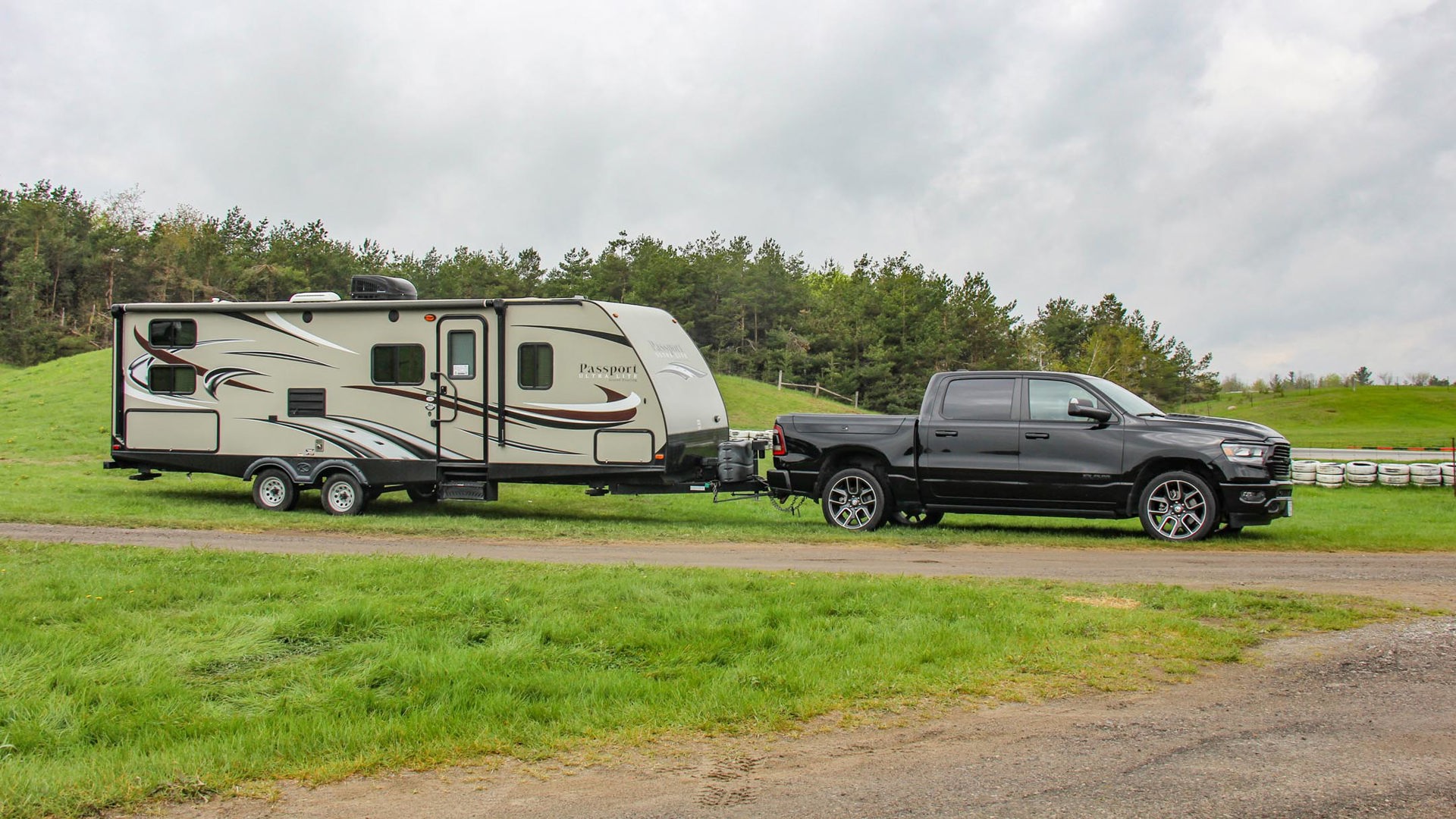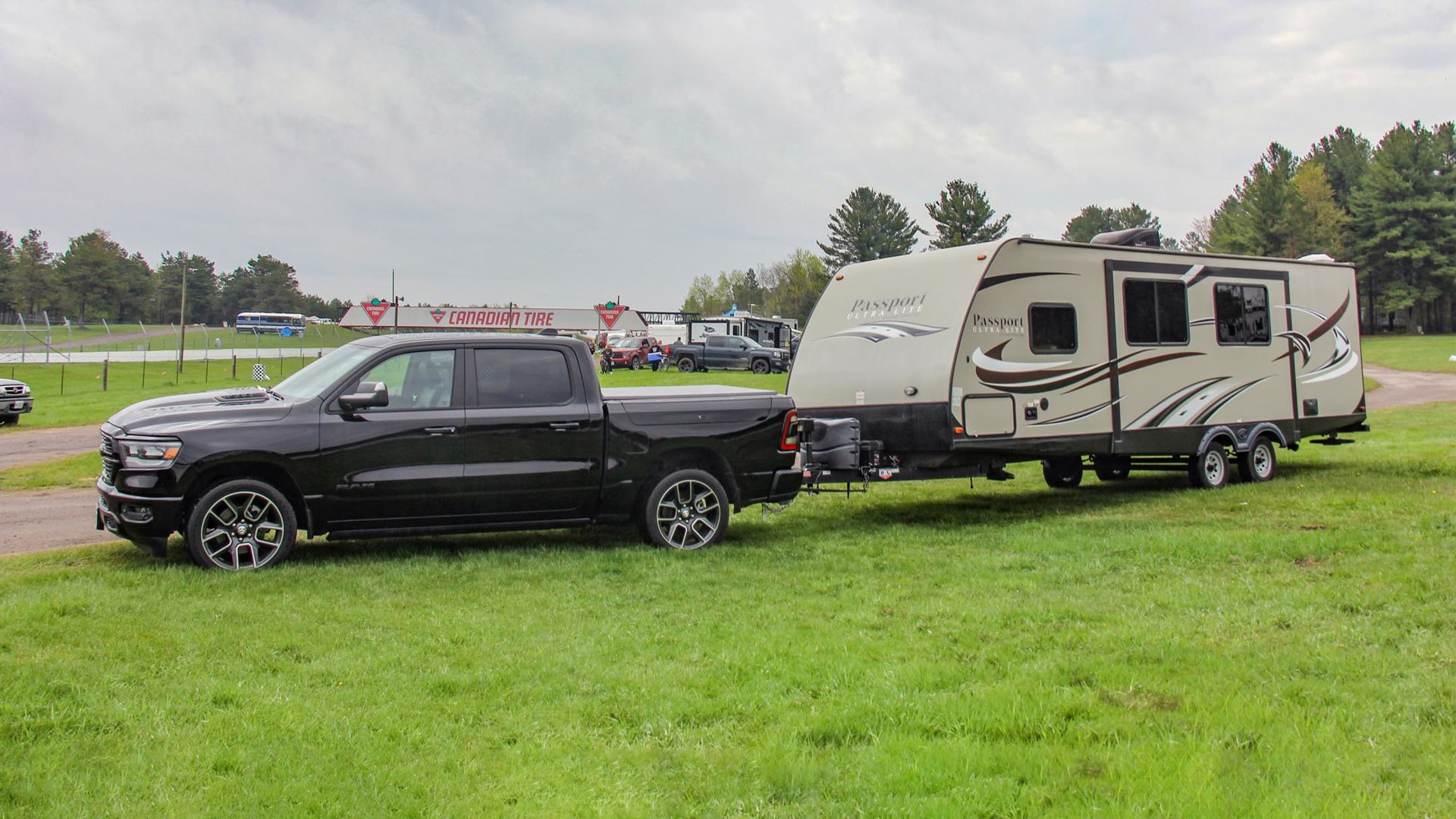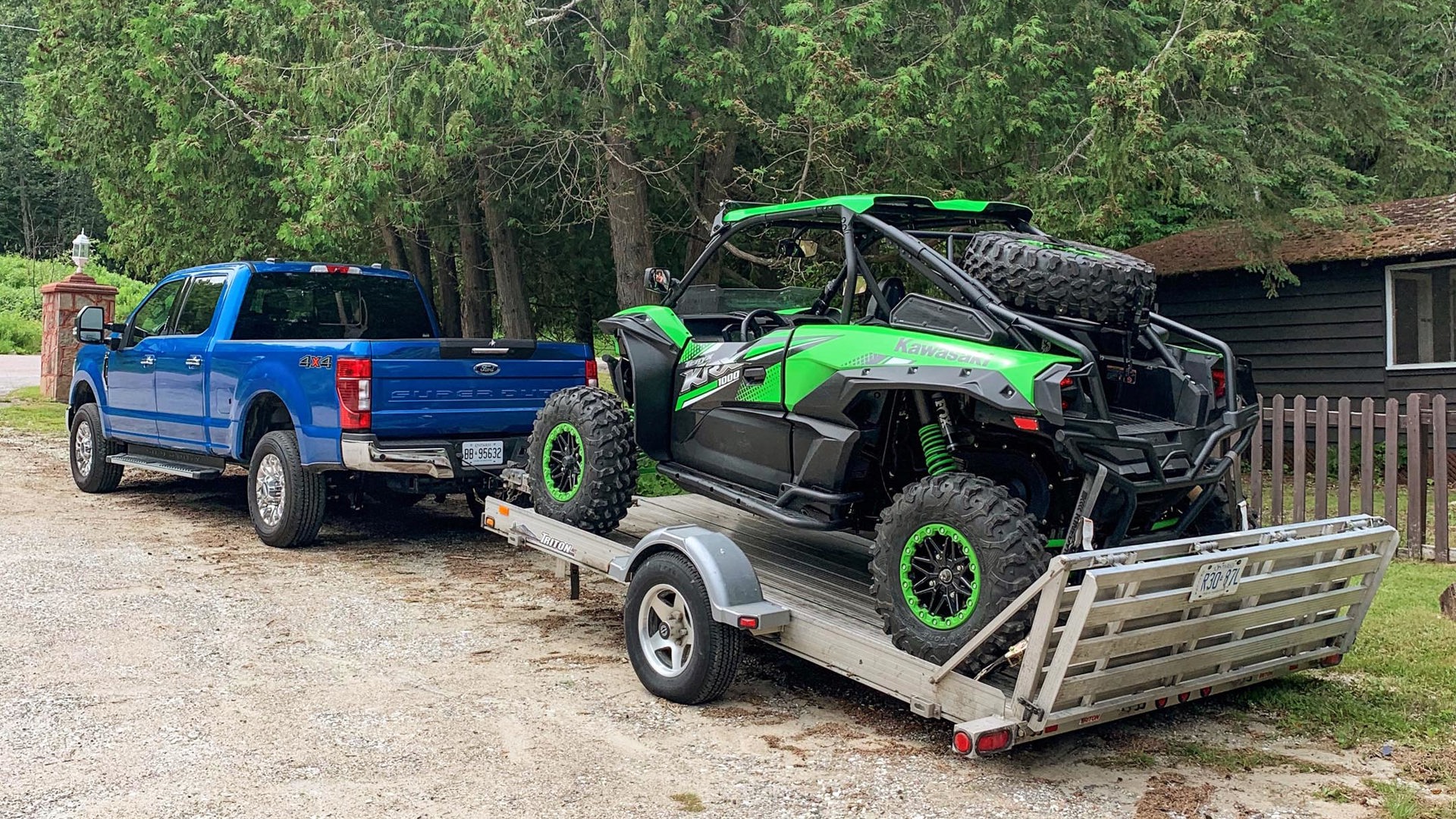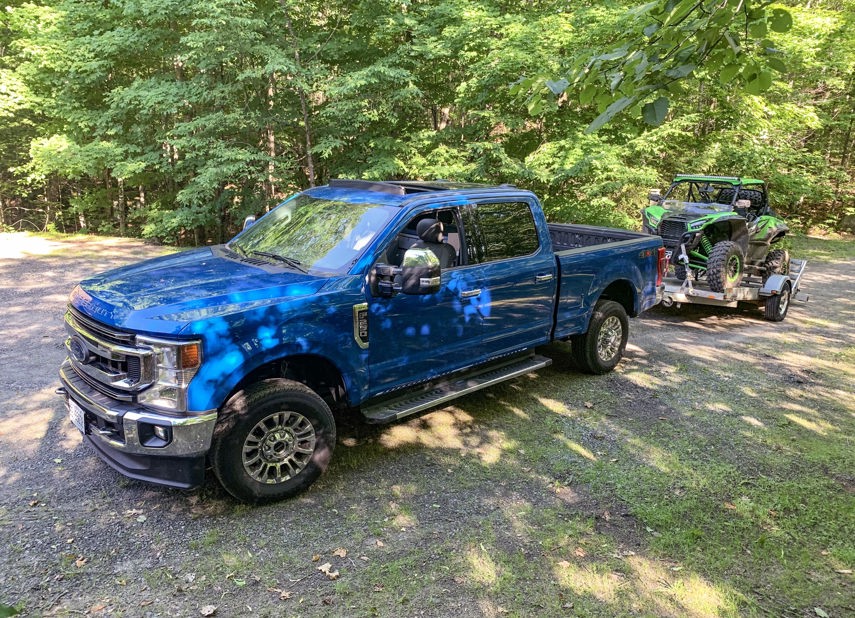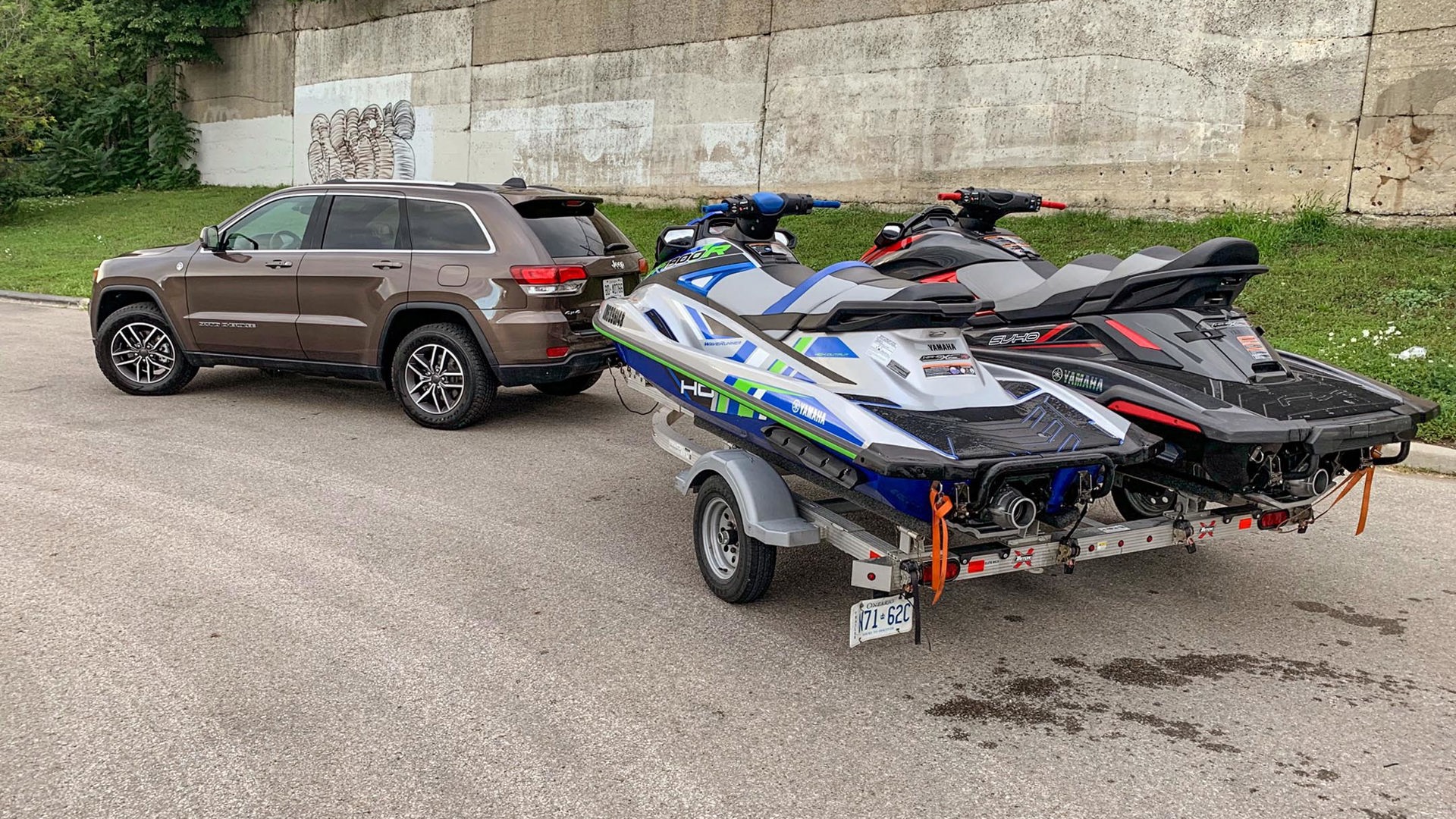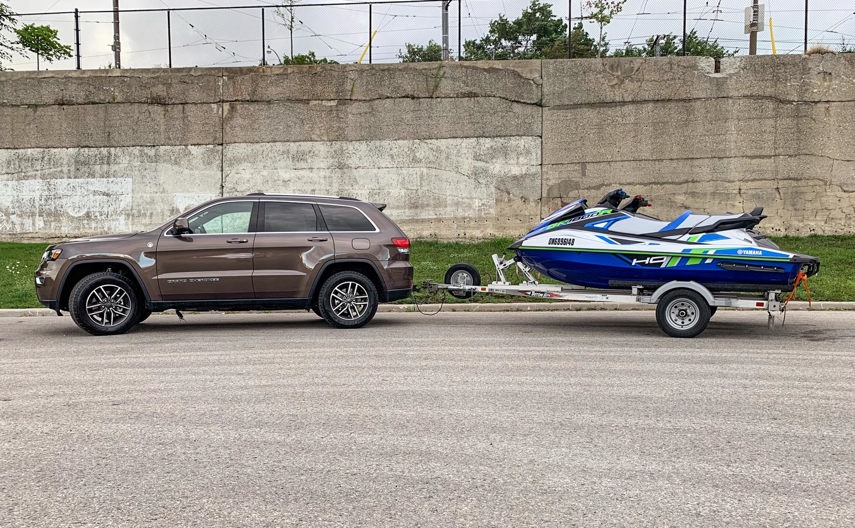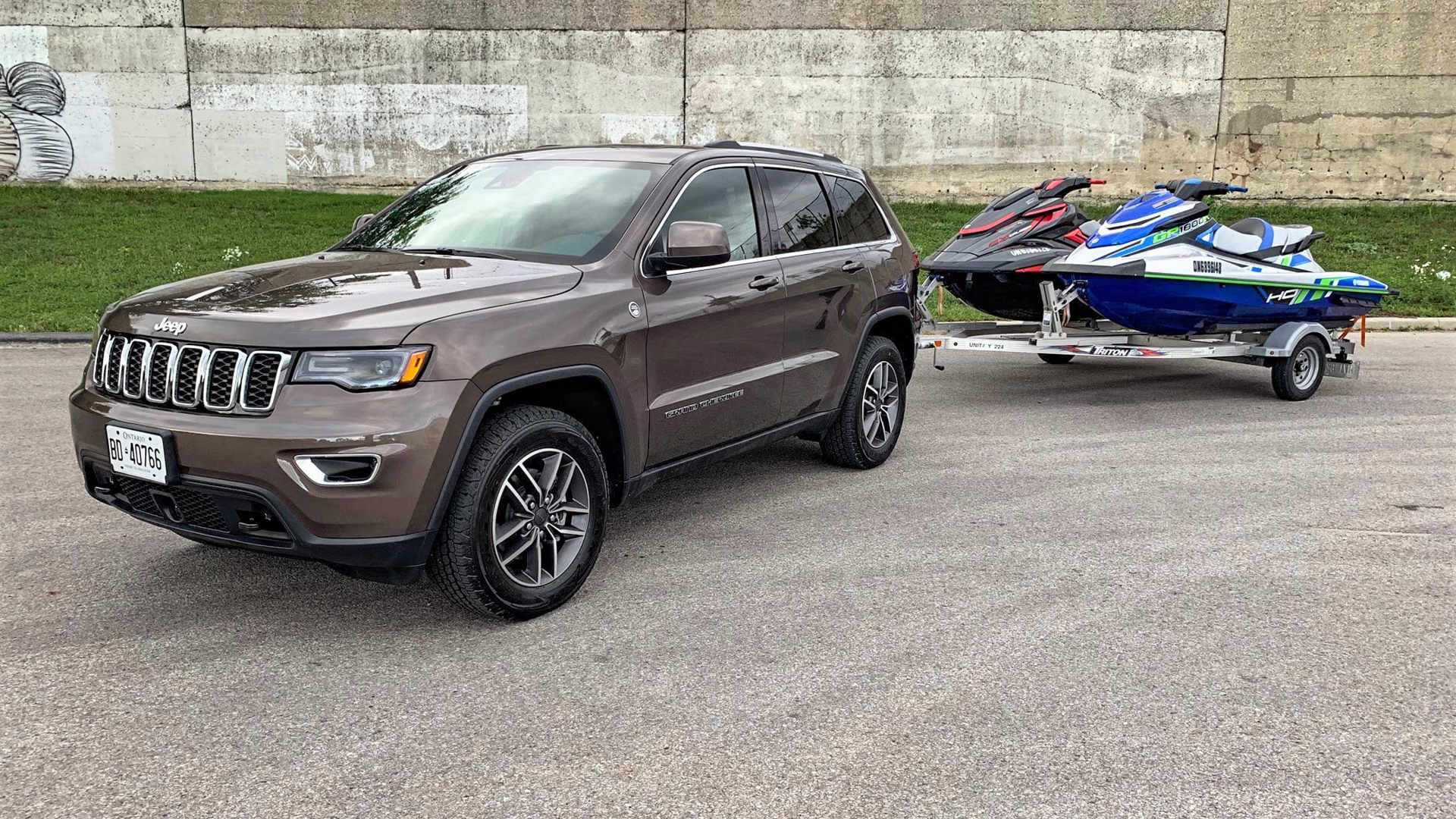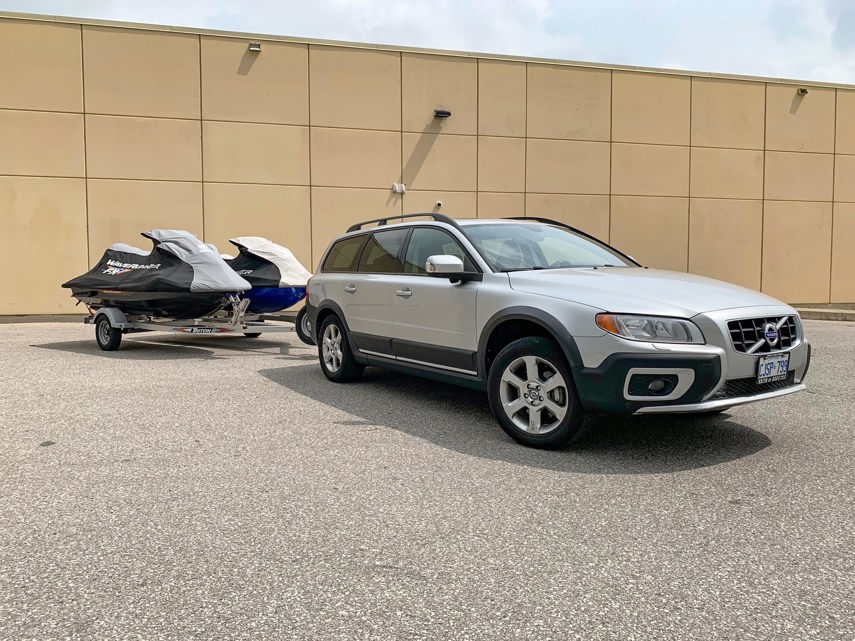Light-duty trucks are undeniably popular. The Ford F-150 has been the best-selling truck in Canada for years and consistently ranks at the top of the most-searched vehicles on our marketplace. Sales of SUVs continue to set records as many Canadian consumers want vehicles that combine comfort and utility with a higher ride height than a car. Some people legitimately need a truck, while others just want one.
Given how refined, sophisticated, and fuel-efficient they have become relative to years past, the space and utility pickups and SUVs offer come with far fewer compromises than ever before. If you’re looking to purchase or lease a truck with the rationale that you need it for towing duty, you still may want to think twice before shelling out big bucks on a vehicle larger or more powerful than you need. Pulling a dirt bike, a single personal watercraft (PWC), or a small garden trailer on occasion can easily be done with a crossover, a wagon, or even a car in many cases.
Regardless of what or how often you may be towing, we’ve documented some things to consider while narrowing down your shopping list.
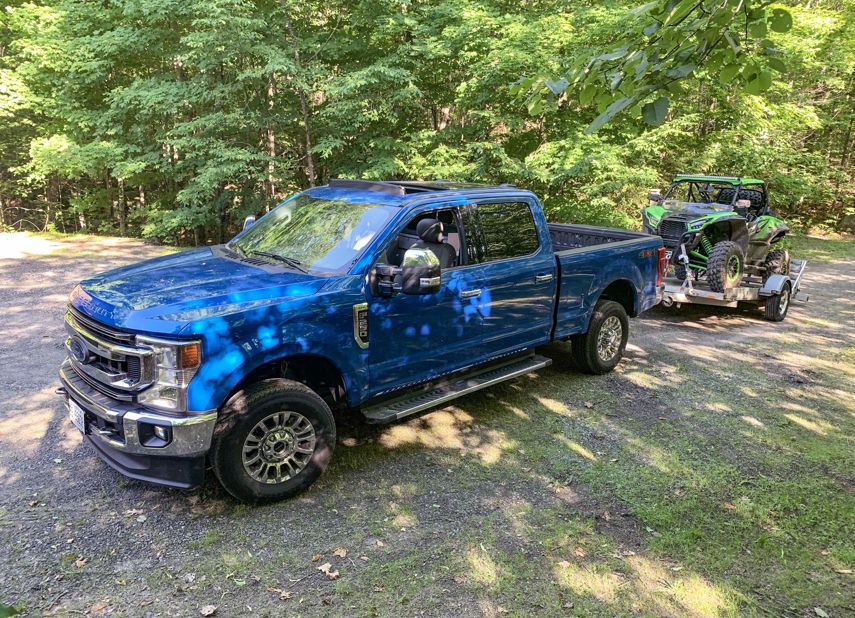
Cost of Ownership
Getting into a new vehicle is exciting but try not to be distracted from making a smart long-term decision. You’ll want to be sure to take into account the expenses associated with that vehicle during the entire time you’ll have it. The higher cost of monthly lease or financing payments, fuel, and winter tires for a larger vehicle may all be more than you originally budgeted for.
If you park in an underground garage or have a smaller driveway, you will also want to take measurements to ensure the trucks you’re cross-shopping will actually fit. If towing duty is only required once or twice a year to drop kids off at college or put a boat into the water, you may be better off opting for a more compact vehicle, a model with a smaller displacement engine, or even renting a truck for the few days you need it rather than buying one.
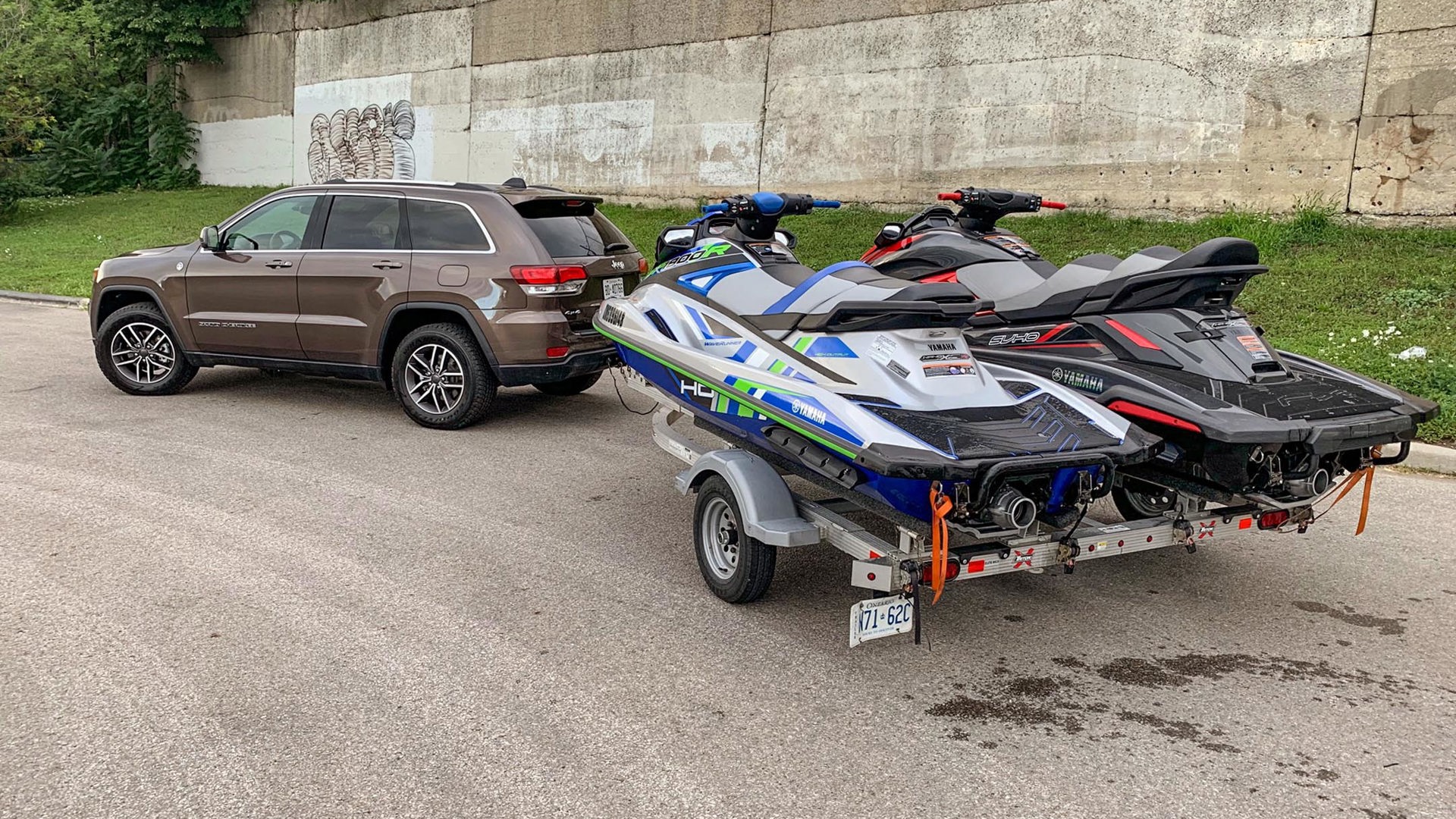
Technical Considerations
There are a number of things to assess and evaluate when choosing a tow vehicle. Make sure you account for a realistic actual weight for your trailer and its contents, erring on the side of caution. For instance, add the weight of gear, food, supplies, and water tanks for a camping trailer; or fuel and safety equipment for a boat, snowmobile, ATV, or a side-by side. You’ll want to ensure these numbers come in below your vehicle’s maximum tow rating.
Be sure to check the capabilities of the specific trim level you’re looking at, as the tow ratings often vary based on how the vehicle is configured. Engine displacement and transmission pairing, chassis, and two- versus four wheel-drive may all have an impact. For example, a regular-cab two-wheel-drive Ford F-150 with a turbocharged 2.7L V6 EcoBoost engine won’t have the same towing capability as its 4x4 crew-cab counterpart packing a 5.0L V8. Do your research to ensure the specific model you are looking to use is up to the task it is being chosen for. This information can be found in a vehicle’s owner’s manual or on a manufacturer’s website.
You’ll also need to consider the gross combined weight rating (GCWR). This refers to the allowable weight of the tow vehicle, including the trailer, total cargo being carried, fuel, fluids, and occupants of the vehicle. Based on how many passengers you’ll be carrying you may need to reconsider the tow vehicle to stay within its maximum recommended limits.
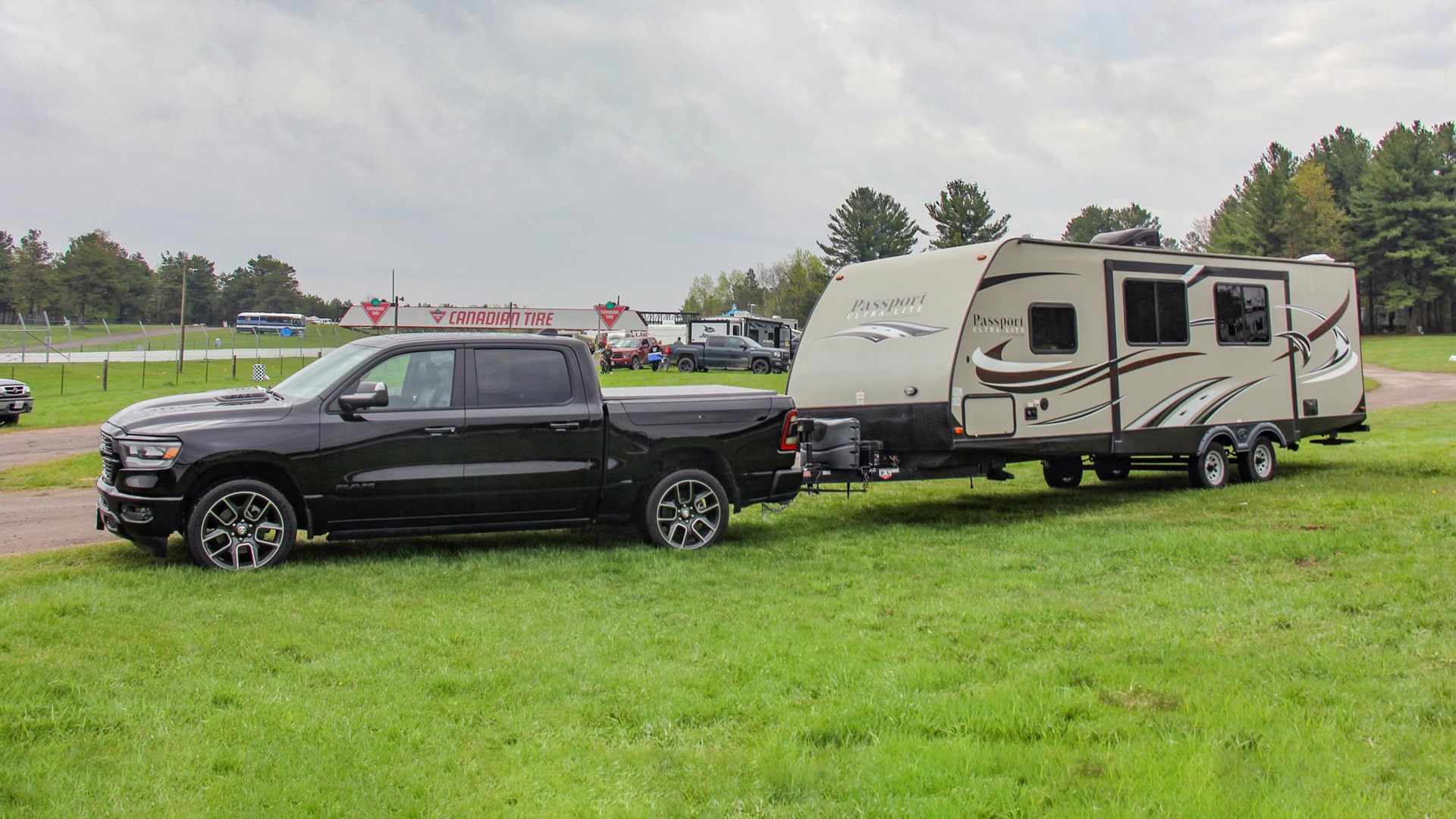
Power vs Fuel Economy
Do you place a higher priority on performance or fuel efficiency? If you’re regularly navigating steep grades or hauling a heavy trailer, then you’ll certainly be inclined to opt for an engine with a robust amount of torque. This introduction of direct injection, cylinder deactivation, and 10-speed automatic transmissions mean that larger engines are far more efficient than their predecessors. However, there are a number of smaller-displacement diesel, turbocharged, and hybrid powertrains on the market that make a compelling argument against having eight cylinders for a daily driver.
Gas or Diesel
Diesel engines get a bad rap for being loud and smelly, but most truck enthusiasts will tell you that there’s no contest when it comes to choosing between a gas or diesel powerplant for towing. Diesel engines typically have higher torque numbers, along with getting better fuel mileage. Diesel vehicles can often go longer between fill-ups, but filling stations aren’t always easy to find. Modern apps can come to the rescue by helping you plan your stops when travelling far from home. Having to add Diesel Exhaust Fluid (DEF) may seem like a pain too, but modern software will provide a reminder – otherwise you just have it added when you get a regular oil change.
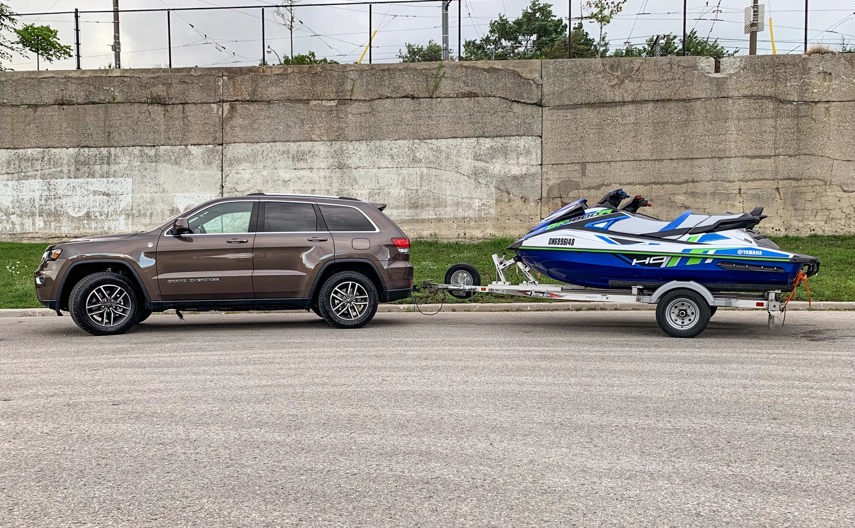
Hitch Class and Tongue Weight
Towing needs are based on Classes I-V. This doesn’t just relate to the size of the ball and hitch, but also the amount of weight a vehicle is capable of supporting and towing. The higher the rating, the more weight it can safety handle. Adapters are available to accommodate a smaller, lighter hitch class, but it isn’t advisable to go the other way around for obvious reasons. Tongue weight should also be considered. Too little or too much weight can both lead to their own risk factors.
Class ratings and examples are listed below:
- Class I: 907 kg (2,000 lb) or less
Example: snowmobile, dirt bikes, motorcycle, PWC - Class II: 1,590 kg (3,500 lb) or less
Example: small boat, pop-up camping trailer, ATV or side-by-side - Class III: 2,268 kg (5,000 lb) or less
Example: car, small boat, camping trailer - Class IV: 4,536 kg (10,000 lb) or less
Example: larger boat, horse trailer - Class V: 9,072 kg (20,000 lb) or less
These will likely require a gooseneck or fifth-wheel trailer hitch. We recommend leaving these kinds of jobs to professionals.
Suspension and Brakes
Based on the numbers above, you may also need to consider the braking capabilities of both the tow vehicle and trailer. Does your trailer have its own braking system? If so, trailer brake modules can be offered as standard or optional equipment, or as an aftermarket upgrade for your vehicle. Heavy-duty trucks will have a firmer suspension while some light-duty trucks and SUVs feature an air-ride setup to accommodate for the added weight of a trailer and cargo payload. If your towing needs are frequent but varying, you’ll want to accommodate for the higher end of this spectrum.
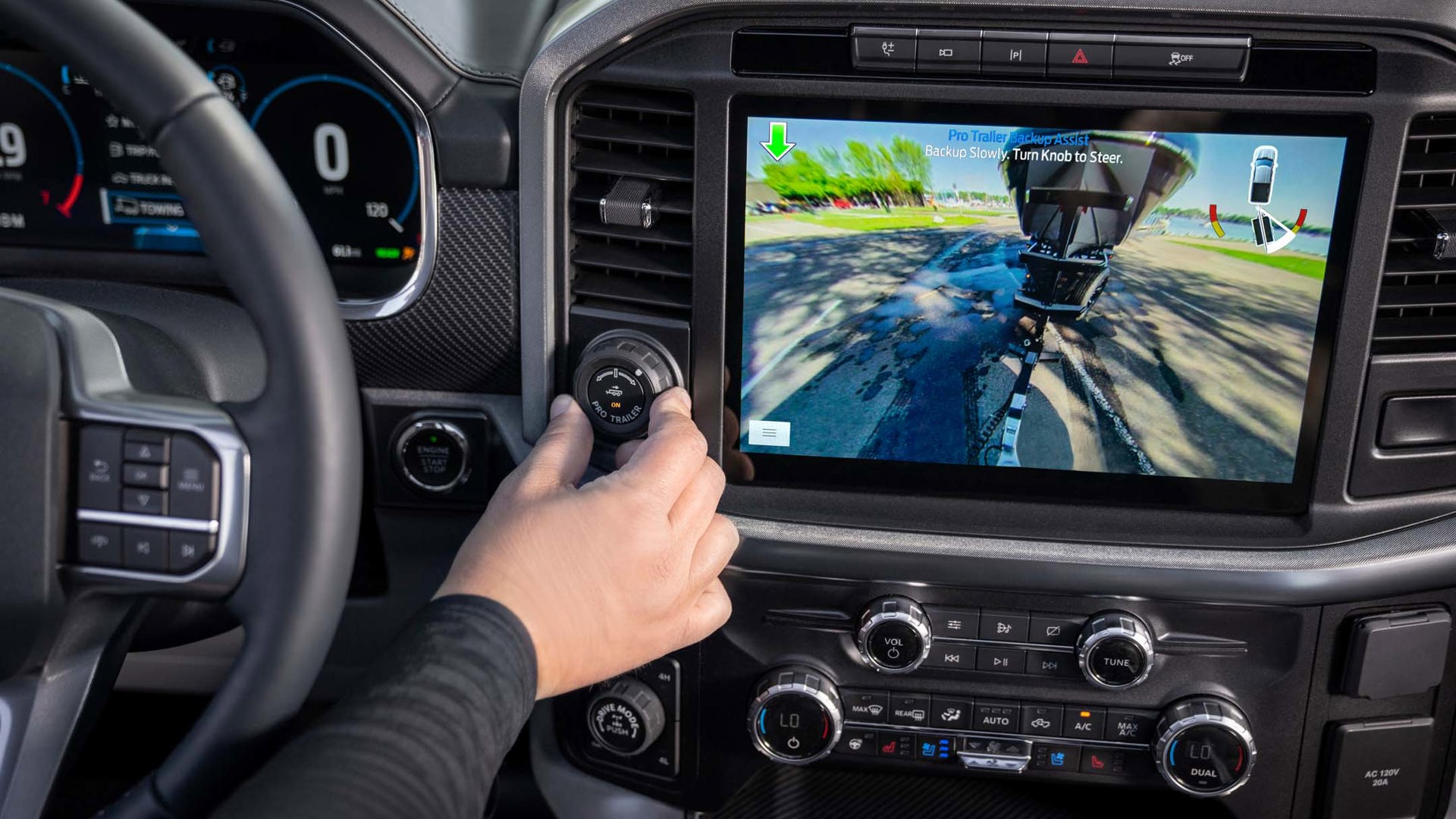
Trailer Towing Tech
If you’re new to towing a trailer, it may take some time to become comfortable with parking, changing lanes, or backing up. Modern features like back-up cameras make the process of hitching up substantially faster and easier. Blind-spot detection systems have even become more sophisticated by incorporating the length of the trailer. It may seem simple, but the Ram 1500’s towing package features mirrors that flip in and out, so you get added coverage but don’t have to worry about the additional drag or width of towing mirrors when you aren’t hauling anything.
Manufacturers have also been adding fancy new tech to help with drivers with the task of towing. GMC’s HD trucks now offer a ProGrade Trailering System that includes a Transparent Trailer View which lets you see inside or behind the trailer you’re towing. That’s pretty neat stuff. For those who can’t get the hang of backing up a trailer, Ford’s Pro Trailer Backup Assist allows you to direct the trailer with a dash-mounted knob.
Other features to consider are either four- or all-wheel drive. Whether navigating a wet boat ramp, a steep grade, loose gravel, or poor weather, having additional traction and grip will increase your comfort, confidence, and safety.
There are times when technology can work against you. Some vehicles equipped with systems like rear cross-path detection alert with emergency braking aren’t able to differentiate between an oncoming obstacle and a trailer, leaving you unable to reverse until you scroll through the settings to disengage.
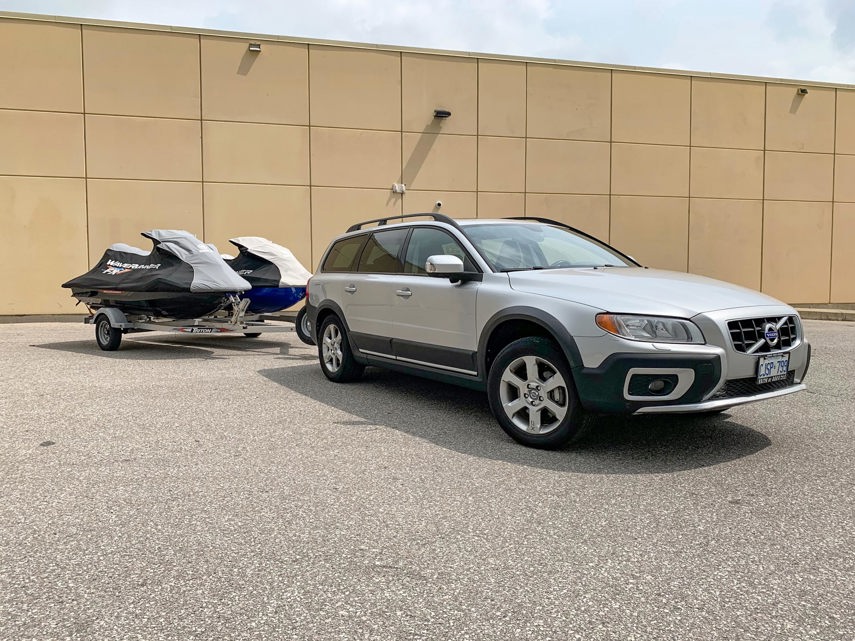
Real-World Experience
It’s not only about numbers. Just because a vehicle is technically capable of towing your trailer, doesn’t mean it should. This summer I witnessed a gentleman ahead of me at the boat launch backing up his boat and trailer down the ramp with his Mustang GT. Granted, the 420 lb-ft of torque provided by the 5.0L V8 was up to the task, but the rest of the setup was not. The rear suspension sagged from the added mass of the boat and trailer weighing on the hitch. Given how low the Mustang is, the car was submerged in water halfway up the doors before the boat starting floating. Embarking up a wet ramp covered in algae with rear-wheel drive and performance summer tires as he tried to exit the water also did not go smoothly.
Having a pair of Yamaha Waverunners at my disposal for a week, I took the opportunity to try towing them with two different vehicles. First, with a 2020 Jeep Grand Cherokee Laredo equipped with a 3.6L V6 good for 295 hp and 260 lb-ft of torque, then with my own 2010 Volvo XC70 3.2. Neither had a V8 but both vehicles were more than up to the task, with each having their own pros and cons.. The combined weight of the GP1800R HO and FX SVHO, including the trailer and fuel, were well within the Jeep’s maximum towing capacity of 2,812 kg (6,200 lb). The back-up camera and tow package made connecting the trailer and lights quick and easy.
My ten-year-old Volvo, on the other hand, had none of the technology listed above, aside from all-wheel drive. The trailer hitch and lighting module were both aftermarket units installed recently at the dealership. Without a back-up camera, connecting was a bit of a guessing game, requiring a couple tries to get the trailer lined up. Once connected, towing was a breeze despite its smaller 3.2L inline-six-cylinder engine making 235 hp and 236 lb-ft of torque, with a far lower maximum towing capacity of 1,497 kg (3,300 lb). Being a wagon with a lower centre of gravity meant that the trailer didn’t sway nearly as much going around turns or over uneven pavement.
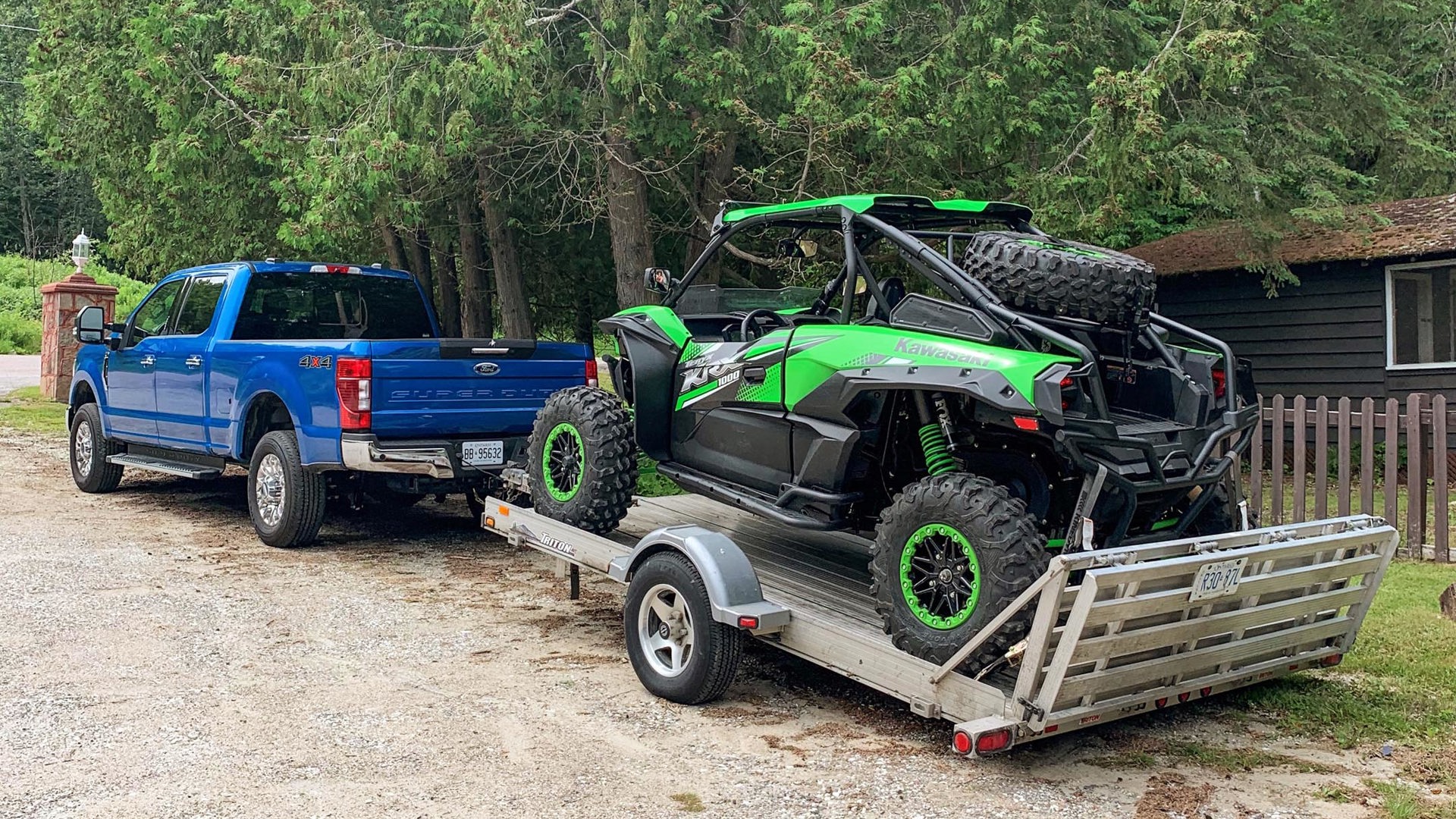
On the opposite side of the spectrum is the 2020 Ford F-250 Super Duty. Optioned with the 7.3L gasoline V8, the powerplant boasts 430 hp and 475 lb-ft of torque. The maximum tow rating for the unit I recently tested is 6,804 kg (15,000 lb), so pulling the 860 kg (1,896 lb) curb weight of the Kawasaki Teryx KRX 1000 as well as its single-axle aluminum trailer with the help of a Class II hitch adapter didn’t exactly cause the Super Duty to sag or struggle. In fact, there were times I forgot I was towing a trailer at all. Given the $72,594 sticker price (before taxes) and 19.6 L/100 km fuel consumption I experienced over the course of the week, I’d say that it was indeed overkill. It was also far too big to fit in my garage and parking space.
Last summer I was provided with a 2,495 kg (5,500 lb) Keystone Passport 2670 BH luxury camper from Sicard RV for a week, which I towed with the Ram 1500 Sport mentioned above. As soon as I connected the two, the truck’s computer recognized the size and weight of the trailer, automatically setting up the brakes, recalibrating the blind spot detection, and adjusting the truck’s air ride suspension. It was the right truck for the job, but also not too large and ungainly to use as a daily driver.
Conclusion
Oftentimes trucks are purchased for fun over function, prestige rather than practicality. Their off-road and hauling capabilities can far surpass what they will be regularly used for. That being said, light-duty trucks are also much more comfortable to drive and easier to park than previous generations. Many trucks and SUVs offer more fuel-efficient powertrain options, so it is up to you and your towing needs to make a decision that best suits your lifestyle and budget.
Based on this information, buying a truck may either be overkill or essential. If you simply won’t be happy with anything other than a large truck or SUV, then buy one. But you may be able to save yourself a few shekels if you focus more on what you need rather than what you want.
